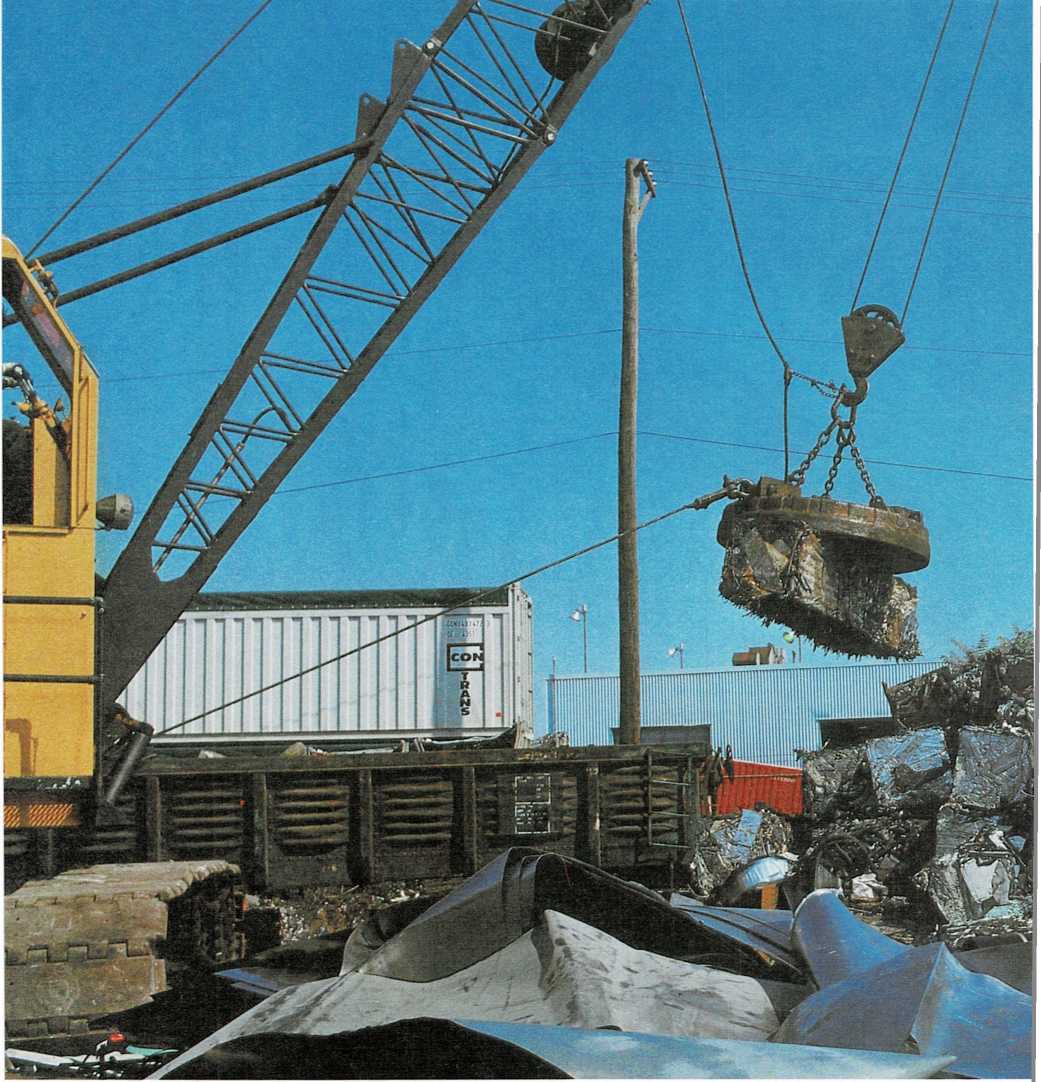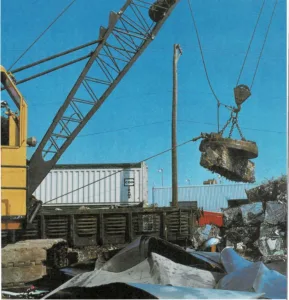
Large electromagnets can lift heavy loads. This one picks up and stacks
big blocks of crushed iron and steel in a junkyard.
An on-off magnet
Electricity can make light and heat. It can also make a magnet—one
that you can turn on and off.
A magnet made with electricity is called an electromagnet (ih
[lehk]{.smallcaps} troh [mag]{.smallcaps} niht). An electromagnet has
two parts—a solid center, or core, and an outer covering made of many
turns of wire. The core of an electromagnet is a piece of iron. By
itself, iron is not a magnet. But it can be made to act like a magnet.
When an electric current runs through the wire that is wrapped around
the iron core, the iron becomes a magnet. The iron gets its pull, or
magnetism, from the moving electrons in the wire. As soon as the
electric current is turned off, an electromagnet loses its magnetism.
Electromagnets make electric motors run. A motor has two sets of these
magnets—an outer set that stays in place and an inner set that moves.
The inner set of electromagnets is attached to an axle—a rod that can
spin. When the motor is turned on, the two sets of electromagnets push
and pull against each other. That push makes the inner magnets move and
set the axle spinning—and the spinning axle of the motor gives a push
that makes machines work.

